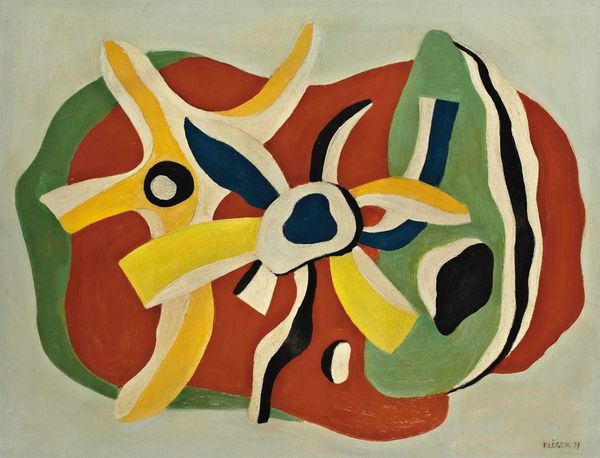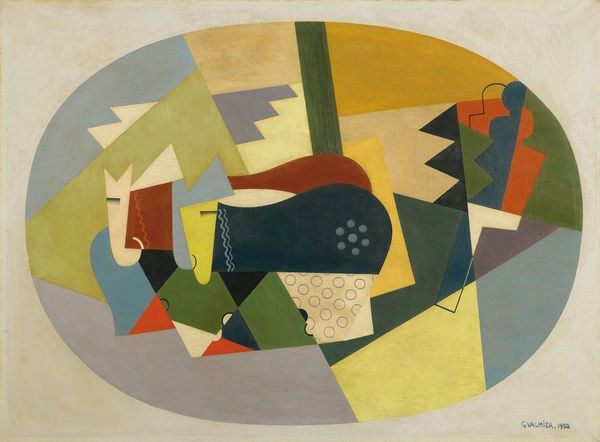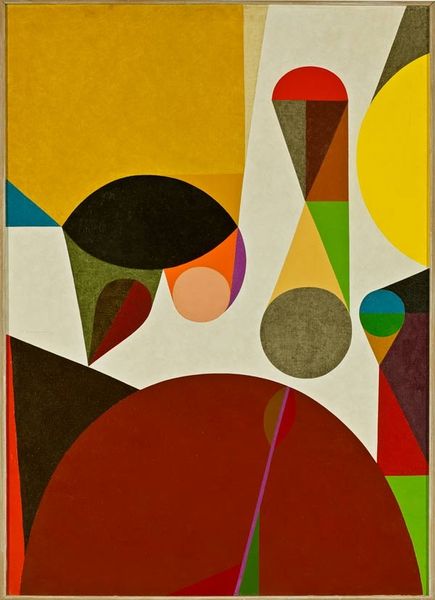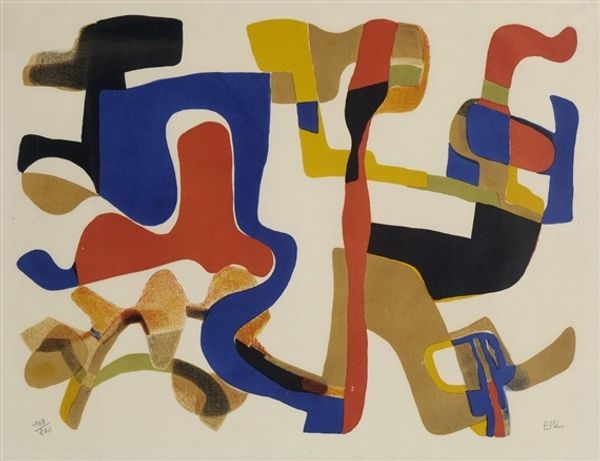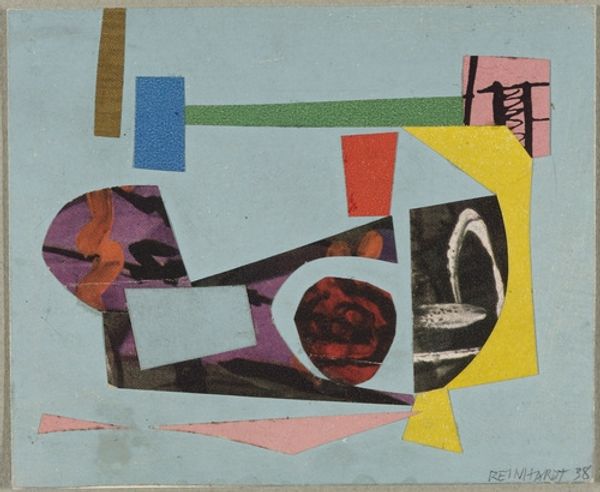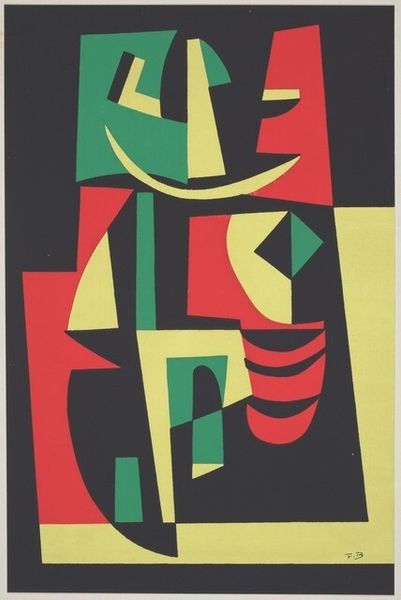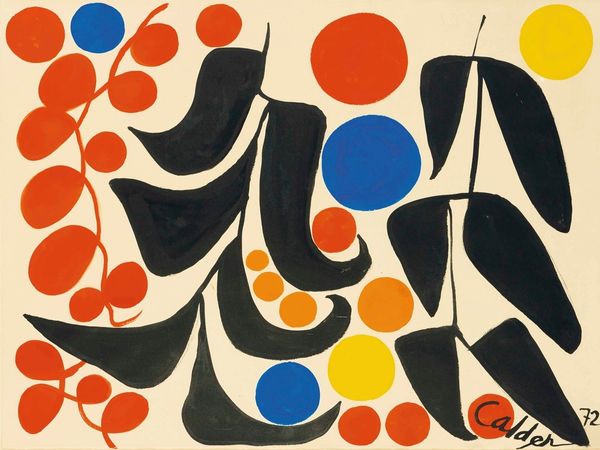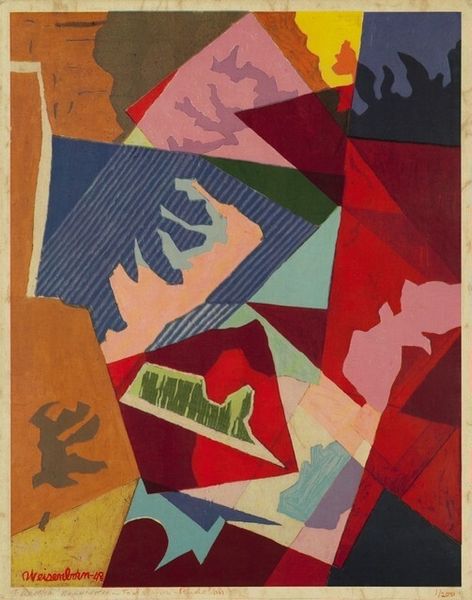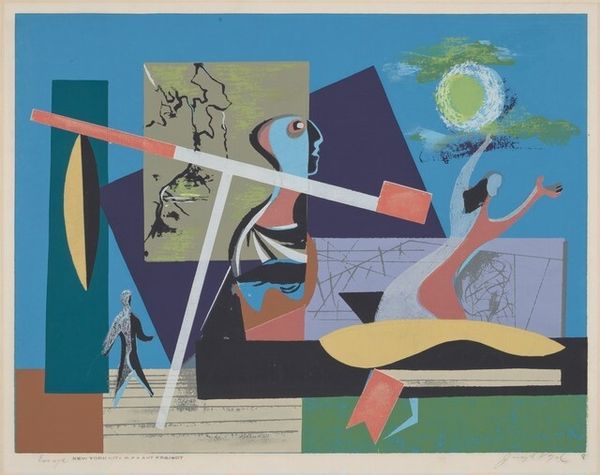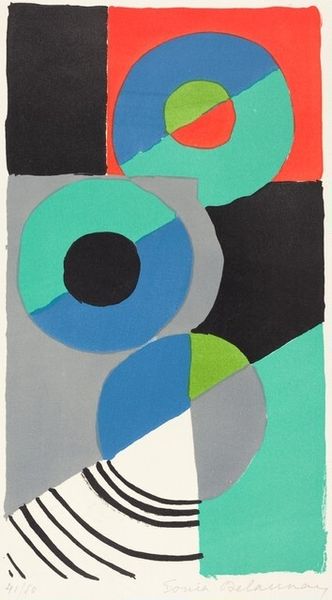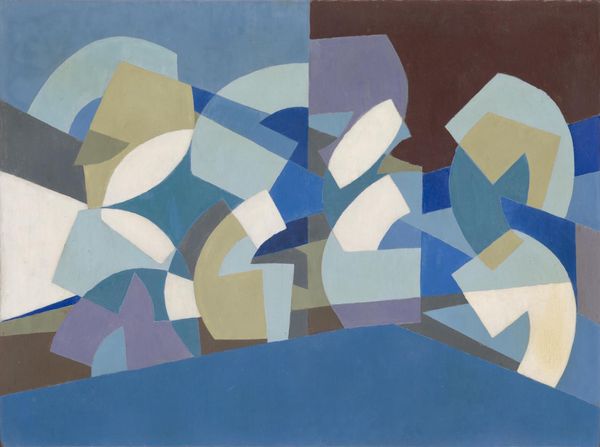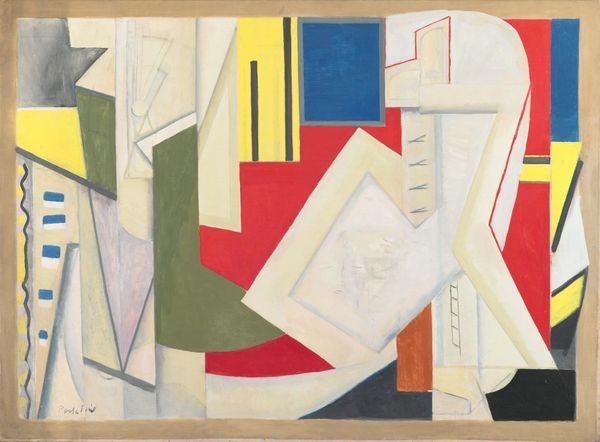
mixed-media, print, acrylic-paint
#
abstract-expressionism
#
mixed-media
#
non-objective-art
# print
#
pop art
#
acrylic-paint
#
form
#
geometric
#
abstraction
Dimensions: Image: 302 x 456 mm Sheet: 345 x 476 mm
Copyright: National Gallery of Art: CC0 1.0
Curator: I’m immediately drawn to the lightness of this image, a sort of airy geometry. Editor: Let's take a closer look at D. Green’s “Chess Pie,” created in 1949 using mixed media techniques, including printmaking and acrylic paint. It’s a captivating example of Abstract Expressionism and non-objective art. Curator: The "Chess Pie" title is quite suggestive, given the geometric abstraction. We have squares, circles and a range of overlapping shapes that form a visual game, perhaps alluding to chess pieces and strategy, even if not explicitly. It evokes the feeling of playfulness. Editor: I’m intrigued by your interpretation! The artist's choice of mixed media prompts me to investigate the techniques used. Considering the time, it seems a deliberate engagement with accessible materials, blurring lines between "high art" printmaking and perhaps more accessible acrylic. I wonder, how did the socio-economic context influence Green’s choices, and did that accessibility influence his message? Curator: Indeed. But the vibrant palette is key too. Notice how these hues interact; green conveying nature, yellows resonating with light and perhaps intellect, reds standing out as bold gestures. Are these a commentary of a brighter future or a recall for a colorful past in times of scarcity and war, when production dictated artistic choices. Editor: I see how color here transcends pure aesthetics, to speak of longing. Moreover, the interaction of color and form is significant. Shapes interlock and bleed over each other as the interplay of industrial production, labor, and a search for identity perhaps is also echoed here? Curator: The question remains: what lasting cultural memory did the artist mean to inspire, encoding geometric abstractions with emotional resonance, while choosing particular media? The artist’s use of readily available materials may comment on an accessibility, but perhaps it speaks even to a longing for clarity amidst social complexities. Editor: Absolutely! We begin to see these images as emotional registers through the careful application of readily available methods and media. The piece prompts reflections on what art materials tell us of labor, value, and access within the cultural dialogue of a given period. Curator: Thanks to both, our seeing the familiar within abstraction, and seeing history written through the media.
Comments
No comments
Be the first to comment and join the conversation on the ultimate creative platform.
